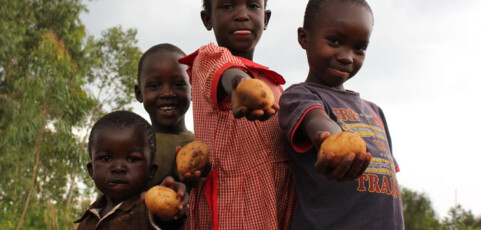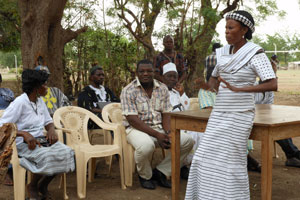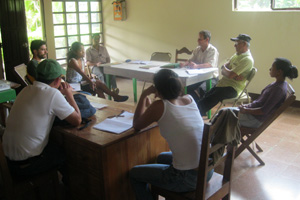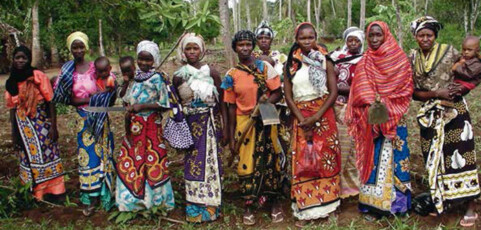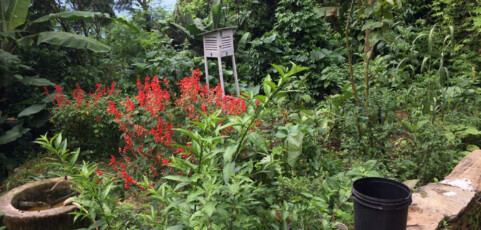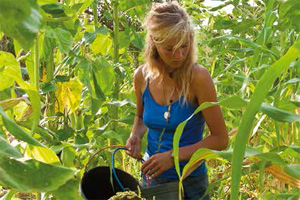In semi-arid cropping regions of West Africa, fallow periods are getting shorter. As land becomes more scarce, farmers are not able to give their soils enough time to rest. This is leading to depletion of soil organic matter, severely threatening soil fertility and damaging soil structure. In the worst cases, crops hardly yield anything anymore. But this is not an option for family farmers. In Burkina Faso, some have found ways to restore their soils that have been dubbed ‘slash and mulch’. The improvement and spread of these techniques also proves the importance of partnerships between farmers and researchers in developing locally suited practices.
Farming for nutrition: – back to the future
Nutrition has become one of the buzz words of the year, like resilience, and landscapes. What they have in common is that they refer to complex situations with political forces competing over the backs of rural and urban communities. The nutrition challenge is clear – with a billion hungry people on this planet and another two billion overweight – it is time to act. Persistent hunger and undernutrition are inexcusable in a world of plenty. But the crucial question is: who should act and how?
Food fairs revive local food and nutrition
Food fairs are an important tool and space to promote food sovereignty as they take place in local public spaces and within people’s own socio-cultural settings. One excellent example was a food fair in Ghana, organised by the Centre for Indigenous Knowledge and Organisational Development (CIKOD). Women farmers exhibited traditional crops and foods, emphasising their importance for local and national food and nutrition security. The fair reminded community and political leaders of the value of neglected traditional foods. Some years later, it can be seen how this and subsequent food fairs helped to ensure the improved integration of traditional foods and agroecological farming into national food security plans.
Youth and agriculture: German youth struggle for land
‘Land grabbing’ has grabbed people’s attention in recent years, but this phenomenon is not restricted to developing countries. In the heart of Europe, young German farmers like Paula Giola are also struggling to retain and regain access to farmland.
Peasant to peasant: The social movement form of agroecology
After the electoral defeat of the Sandinistas in 1990, former land owners returned to Nicaragua from the USA. They began to take back their former estates through legal and less than legal manoeuvering, driving many rural people off the land they had been cultivating. This ‘agrarian counter-reform’ as it became known, left many hundreds of people landless in its wake during the 1990s and early 2000s. Now a national union has adopted agroecology and is leading the way for peasant farmers to collectively work their way out of poverty and towards a more resilient model of agriculture.
Finding a way out of the maize
Recurring drought and crop failure in many parts of the world have led to food and nutrition insecurity, and a dependence on food aid. But recently, some farmers in Kenya have been developing their own sustainable way to secure enough nutritious food along with extra income so that they can send their children to school. Traditional drought tolerant, nutritious crops such as cassava, sorghum and millet that were losing popularity due to a surge in maize production are again becoming commonplace, with reliable harvests improving diets and income.
Nutrition from innovation and taste from waste
From a situation of widespread undernutrition, consuming fresh vegetables all year round has now become a reality for many Nepali households thanks to their expanding home gardens. But the stories they tell show that the benefits of home gardens are not limited to improving household nutrition. The gardens also help to empower women and conserve biodiversity, two much needed conditions for better family and community nutrition on a broader scale.
Linking family nutrition in city and country
Ecuador is going through a substantial nutritional transition. This, coupled with the paradox that rural families that produce food are often those most affected by undernutrition, shows the ironies of ‘modern’ food systems. It also highlights the importance of rural-urban linkages around family nutrition which can help to address such contradictions. This is what we see among families living in two rural villages, San Francisco Alto and Ambuqui, in the north of Ecuador, who through various strategies have managed to achieve healthy, diversified and nutritious diets.
Food justice moving forward in the USA
Opinion by Navina Khanna.
Navina Khanna introduces the food justice movement in the USA, and how from the corner shop to Capitol Hill, communities are making waves, and fighting for fairer policies in both corporate and governmental sectors.
Turning vicious circles into virtuous cycles
We have read about poverty, vulnerability and resilience of family farming. The articles in this issue of Farming Matters have shown that there is an urgent need for a change in mindset regarding family farming, agriculture and food systems. And resilience must be the central concept in this new thinking.


